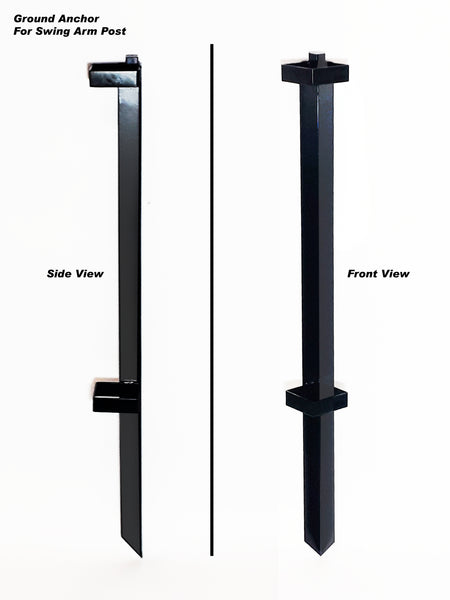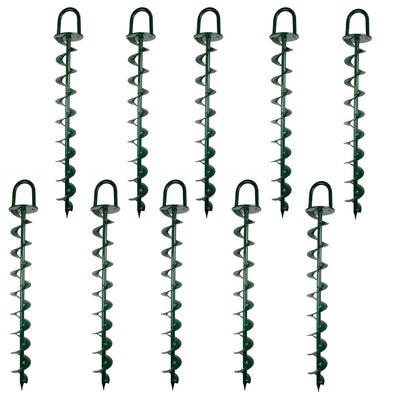An Easy-to-Follow List for Installing and Using a Ground Anchor
An Easy-to-Follow List for Installing and Using a Ground Anchor
Blog Article
Discover the Various Sorts Of Ground Support for Your Following Job
When starting a building and construction or landscape design task, understanding the different sorts of ground anchors readily available is important to making sure both stability and longevity (Ground Anchor). From auger supports, which master diverse dirt problems, to risk supports developed for short-lived installments, the choices are countless. In addition, concrete and screw anchors existing special benefits in particular scenarios, while deadman supports are tailored for applications requiring resistance to side pressures. The option of a suitable anchor type can substantially affect the overall success of your task, triggering more exploration right into their respective benefits and applications.

Auger Anchors
Auger anchors are a prominent choice in different building and landscaping projects due to their unique design and efficient securing capabilities. These supports include a helical screw-like shaft that is driven into the ground, enabling a secure and safe hold. The spiral layout promotes easy setup and makes best use of resistance versus side forces, making auger supports particularly effective in applications such as secure fencing, short-term frameworks, and disintegration control.
The installment procedure of auger anchors is relatively uncomplicated. Auger supports can be quickly gotten rid of and recycled, which adds to their cost-effectiveness and sustainability.
Among the significant benefits of auger anchors is their capability to distribute lots uniformly across the bordering dirt, decreasing the risk of soil disturbance and lessening environmental impact. Furthermore, they are less at risk to loosening up or heaving in time compared to conventional anchoring techniques. Subsequently, auger supports are a superb choice for projects needing durable and trustworthy anchoring solutions.

Risk Anchors
When it concerns protecting structures in a range of exterior applications, risk supports use a dependable and straightforward service. These supports are typically built from resilient products such as steel or light weight aluminum, made to withstand ecological tensions while offering ideal stability. Their simple layout enables quick setup, making them an excellent selection for temporary or long-term anchoring needs.
Risk supports are specifically beneficial in safeguarding outdoors tents, covers, and other lightweight structures versus wind and weather. They operate by being driven into the ground at an angle, producing a solid hold that resists pull-out pressures - Ground Anchor. The effectiveness of risk anchors depends on several factors, including soil kind, moisture content, and the angle of installation
For included safety and security, many stake anchors come with attachment factors for straps or ropes, allowing for stress modifications as essential. In applications such as landscape design or building, they can efficiently stabilize devices or frameworks on uneven terrain. On the whole, stake anchors offer a functional and cost-efficient option for protecting various exterior installations, making them a preferred selection for contractors and DIY lovers alike.
Concrete Anchors
Concrete anchors give a durable option for securing structures to concrete surface areas, guaranteeing security and safety and security in different applications. These anchors are crucial for tasks ranging from domestic building and constructions to massive commercial installations. They are available in different types, consisting of development supports, adhesive supports, and undercut anchors, each developed for specific load requirements and ecological conditions.
Adhesive supports use high-strength epoxy or resin to bond the anchor to the concrete, supplying superior load-bearing abilities, particularly in cracked concrete scenarios. Undercut anchors develop a distinct form within the concrete, giving exceptional holding power, particularly in applications where tensile lots are widespread.
Selecting the appropriate concrete support involves taking into consideration variables such as the weight of the tons, the condition of the concrete, and environmental problems. Appropriate setup strategies are vital to guarantee optimum efficiency and dependability. When performed properly, concrete supports considerably improve the architectural stability of different tasks, making them indispensable in modern building methods. Recognizing the specific requirements of your task will assist in selecting visit site the best type of concrete support for the job.
Screw Anchors

Screw supports are a versatile attaching solution that can be properly employed in a range of applications where conventional concrete supports may not be enough. These anchors contain a see it here helical style that allows them to be easily driven right into the ground, making them perfect for usage in soil and other substratums. Their special framework provides excellent holding power and resistance to pull-out pressures, making them ideal for numerous jobs, from landscaping to structural support.
Among the primary benefits of screw supports is their simplicity of installment. They require marginal tools and can commonly be mounted without the requirement for excavation, which saves both time and labor costs. Furthermore, screw supports can be removed and reused, supplying a sustainable service for short-term applications.
Screw anchors are specifically beneficial in areas where dirt problems are challenging, such as sandy or loosened dirts. Their capability to be installed at varying depths permits for customization based upon particular job requirements. In general, screw anchors provide a efficient and trustworthy securing approach, making them an exceptional selection for engineers and service providers looking for reliable options for their jobs.
Deadman Anchors
Deadman anchors serve as a durable service for maintaining frameworks in difficult conditions, especially where traditional securing methods may fail. These anchors include huge, hefty things hidden underground, which create resistance versus side pressures. The layout generally includes a horizontal element, such as a block of concrete or a steel plate, hidden in the soil, to which bands or cords are attached.
The effectiveness of deadman anchors lies in their capacity to distribute loads over a bigger area, decreasing the threat of failing in unpredictable dirt problems. They are particularly beneficial in applications such as maintaining wall surfaces, short-term frameworks, and incline stablizing, where soil movement can jeopardize the find out this here integrity of the framework.
Installment of deadman supports needs mindful preparation to ensure they are placed at the appropriate deepness and alignment, maximizing their load-bearing capability. While they may need more labor and product than lightweight supports, their reliability in adverse conditions makes them very useful for long-term tasks. Additionally, deadman supports are versatile and can be adjusted to various applications, making them a go-to selection for designers dealing with one-of-a-kind difficulties in their jobs.
Verdict
Auger anchors stand out in varied soil conditions, while stake supports suit momentary applications. For concrete surface areas, growth and glue anchors supply reputable options, and screw anchors supply flexibility in tough surfaces.
In addition, concrete and screw supports existing special benefits in particular situations, while deadman supports are customized for applications calling for resistance to side forces - Ground Anchor.Auger supports are a preferred choice in different building and construction and landscaping jobs due to their unique design and reliable securing capabilities. They come in various kinds, including expansion anchors, glue anchors, and undercut supports, each developed for details tons requirements and ecological problems
Glue supports utilize high-strength epoxy or material to bond the anchor to the concrete, offering exceptional load-bearing abilities, specifically in cracked concrete situations. In general, screw supports give a efficient and dependable securing technique, making them an outstanding choice for designers and professionals looking for efficient remedies for their jobs.
Report this page